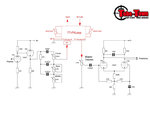ledvedder
Well-known member
FourT6and2":2c4j1jy4 said:ledvedder":2c4j1jy4 said:FourT6and2":2c4j1jy4 said:I would use coax for everything if you're running wire to-from the board and/or jacks.
Or... you could just spend $80 on a better delay pedal. One that has selectable true-bypass or buffered. And if that doesn't sound good to you, just return it and then worry about tearing up the amp. GC or Sweetwater both have good return policies. Seems like a smarter course of action to me.
Yep, I thought about that. But, my problem is that I need delay, reverb, and a volume boost through the effects loop. That's up towards $400 to replace effects that I already have.
You only need one buffer... Don't need to replace all three things. Just get one pedal with a solid buffer in it. Or a dedicated buffer pedal.
But don't I need to buffer the volume both in and out of the effects loop?





